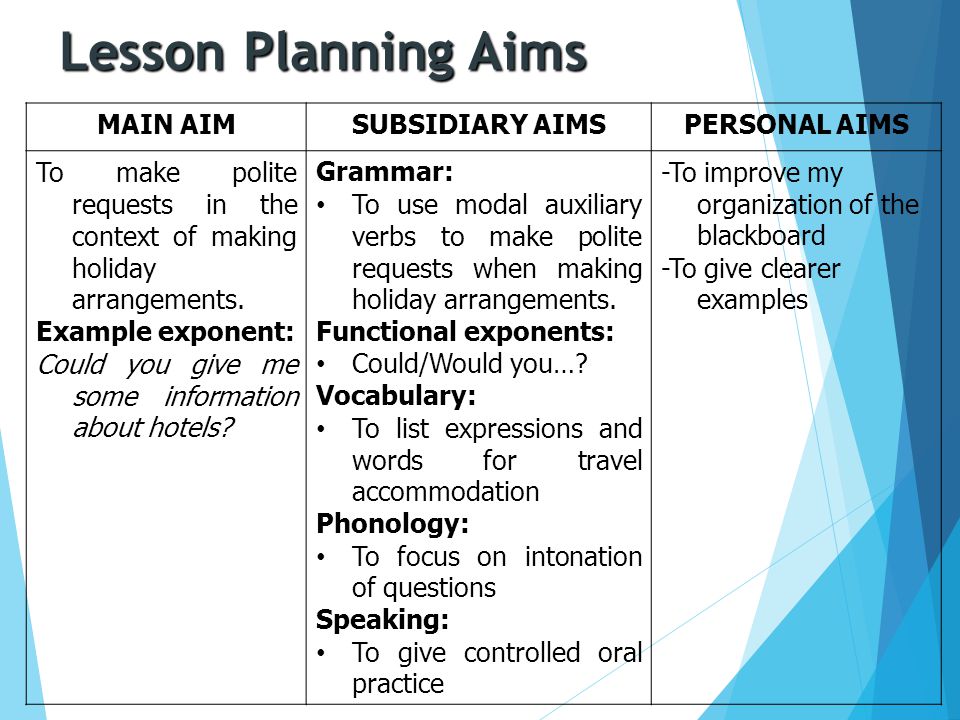At home therapy for couples
Top 10 At Home Couples Therapy Exercises
Couples at any stage of their relationship can benefit from counseling and therapy. While most people consider couples counseling as a last resort before a divorce or breakup, the fact is that happy, healthy couples can also learn valuable lessons from these sessions. If you’re trying to get closer to your partner, the techniques below may help you establish better communication and bonding in the future. Here are the top 10 at-home couples therapy exercises.
1 – Make A List Of Fun Activities To Try Together
One of the best ways to bond with your significant other is by trying new experiences together. This could be as simple as visiting a museum in town, or it could be as complex as going on a cruise to a dream location. Create a list of fun activities to try as a couple, and make an effort to do at least one thing from the list every month. You can make a separate list for family activities if you desire, but this should be a list just for you and your spouse.
Spending some quality time together in an unfamiliar environment will help you connect in a whole new way.
2 – Resolve All Arguments Before You Go To Bed
By now, you’ve probably heard the phrase “don’t go to bed angry.” What may seem like a simple concept is actually a crucial part of at-home couples therapy exercises. By going to bed angry, you leave issues unresolved, and you allow yourselves to dwell on the matter throughout the night. If you simply cannot come to terms before bed, make a note to contact your couples counselor in the morning so you can schedule an appointment as soon as possible. The longer you let the issue sit, the more bitter you will both become about it. Fix the problem quickly, and you can move forward to a better quality of life.
3 – Have An “Honesty Hour” At Least Once A Month (Preferably Once A Week)
Honesty should always be a goal in a relationship, but sometime you may find yourself biting your tongue because you don’t want to upset your partner. That’s what the “honesty hour” is for. At least once a month, set aside a full hour of a day where you and your spouse talk about things that bother you – judgment-free. You must both agree not to get offended or hold a grudge over anything that is said during this hour. This is set up to give both of you a chance to speak out and truly be heard. When your spouse is talking, LISTEN. He or she will hopefully give you the same courtesy when you have something to say.
That’s what the “honesty hour” is for. At least once a month, set aside a full hour of a day where you and your spouse talk about things that bother you – judgment-free. You must both agree not to get offended or hold a grudge over anything that is said during this hour. This is set up to give both of you a chance to speak out and truly be heard. When your spouse is talking, LISTEN. He or she will hopefully give you the same courtesy when you have something to say.
If you do not feel comfortable doing this on your own at first, you could practice with your couples counselor to see how the process goes. He or she will tell you if either of you is being defensive so you end up with positive results when you try it on your own.
4 – Set Aside A Special Date Night Every Week
Date nights are great for couples of all ages, no matter how long they have been together. It’s easy to forget about going out on a date when you live with someone and see him or her on a regular basis. Date nights are designed to get you out of the house and allow you to reconnect with your spouse in a fresh environment. If you cannot leave home, send the kids to spend the night with a family member, and cook dinner for just the two of you. As long as you make the night special and just about you as a couple, you can fall in love with each other all over again.
Date nights are designed to get you out of the house and allow you to reconnect with your spouse in a fresh environment. If you cannot leave home, send the kids to spend the night with a family member, and cook dinner for just the two of you. As long as you make the night special and just about you as a couple, you can fall in love with each other all over again.
5 – Spend Intimate Time Together As Often As Possible
Intimacy is a fundamental component of a thriving relationship. However, it’s important to note that “intimacy” is about more than just sex. It’s about connecting with a person on a deep emotional level, more so than you do with any other person in your life. Every night before you go to sleep, spend some time talking to your spouse in bed – without the TV on, without your cell phone in hand, and without any other distractions that could take you away from this moment. Cuddle, hold each other’s hands, or look into each other’s eyes and take a moment to appreciate the amazing person you’ve chosen to be with. It’s these quiet moments that keep long-lasting relationships going for decades at a time.
It’s these quiet moments that keep long-lasting relationships going for decades at a time.
6 – Unplug Yourselves For A Night
It’s amazing how much of a distraction electronics can be. As part of your at-home couples therapy techniques, try spending a night completely unplugged from the rest of the world. No phones, no televisions, no computers, and no tablets. Just you and your spouse spending quality time together. You may play board games, give each other a massage, take a relaxing bath or do anything else that does not require electronics. This will allow both of you to focus 100% of your energy on the other person, and it will ultimately make you stronger as a unit.
7 – “Leave It ‘Til Sunday”
The “leave it ’til Sunday” technique can help you see which fights truly matter and which ones are trivial and unnecessary. Any time you have an argument that you can’t seem to come to terms about, put it to the side and talk about it on Sunday. If it is still an issue by then, you can re-open the argument and move forward. In many cases though, you will both forget about the problem by the end of the week. Anything that gets forgotten clearly isn’t a priority, as a discussion about chores or a television show.
In many cases though, you will both forget about the problem by the end of the week. Anything that gets forgotten clearly isn’t a priority, as a discussion about chores or a television show.
Of course, there is some controversy behind this practice because leaving it until Sunday could mean leaving issues unresolved for days at a time. You don’t want to do that. You still need to talk through issues that have a major impact on your relationship so you do not dwell on them for too long. If you find yourself in a “tiff” with your partner about something minor, that could be pushed off until the end of the week. You’ll learn how to prioritize your arguments as time progresses.
8 – Identify And Eliminate Stress Triggers
Stress is not healthy for your mind or your body. In a relationship, stress often leads to major conflicts because one person is irritable, emotional, depressed, etc. One of your goals for couple counseling should be to identify sources of stress in your life and your spouse’s life and then figure out ways to get rid of the stress for good. For instance, if one spouse is stressed about paying the bills for the household, the other person may decide to take on another job to provide additional support. If you are worried about your personal health, talk to a doctor, and see what treatments you can explore. Every stress trigger has a solution, even if it is not obvious at first. You can discuss all of this as a couple and come up with the best solutions for your situation.
For instance, if one spouse is stressed about paying the bills for the household, the other person may decide to take on another job to provide additional support. If you are worried about your personal health, talk to a doctor, and see what treatments you can explore. Every stress trigger has a solution, even if it is not obvious at first. You can discuss all of this as a couple and come up with the best solutions for your situation.
9 – Use Trust Falls To Build Trust In Your Relationship
Trust falls are used in a number of team-building exercises. They are designed to help you trust the person you are with no matter what. To conduct a trust fall, all you have to do is stand behind your partner with your face toward his or her back. The person in front will fall backward onto the person in the back, and the person in the back is supposed to catch the person in front. The person in front must blindly assume that their partner will in fact “have their back.” Once you can learn to trust someone with this basic responsibility, you can open yourself to trusting him or her in all areas of life.
10 – Write An Appreciation List For One Another
Spend some time writing down all the things you appreciate about your spouse. One of the main reasons why people feel like they are in a one-sided relationship is because they do not feel appreciated by their partners. By clearly expressing what you appreciate about your spouse, you can help him or she feels a sense of value in the relationship. You can build confidence in yourself along the way as you read about all the things you do to make your partner happy.
PRO TIP: Turn your appreciation list into a compliment jar! Write down the various things you appreciate about your spouse on strips of paper, and have him or her do the same. Every day before you leave for work, you can take out one of the strips and remind yourself that you’re doing something right in the relationship. This is particularly helpful for couples who spend a great deal of time apart from one another. Short notes back and forth will keep the romance strong and remind you of the love that burns deep inside you.
25 Couples Therapy Exercises You Can Do at Home
In This Article
Marriage isn’t always easy and it can be helpful to have some professional guidance and advice along the way.
But, not all couples are excited at the thought of airing their marriage difficulties to a stranger in therapy.
Thankfully there are many couples therapy exercises you can do at home to strengthen your relationship and build trust and communication.
These couples therapy techniques can help you communicate on a deeper level, teach you to fight fair, and create goals for your future together.
There are many benefits to practicing these couples therapy exercises both before and after marriage.
Strengthen your relationship and your love for one another by adding these 25 trust and communication-building exercises into your weekly routine. These exercises can work well instead of pre-marriage counseling, or alongside it.
1. Do a trust fall
Do a trust fallA trust fall is a trust-building exercise that may seem small but fosters large results. We may have done it as a fun activity with friends but it can be a part of couples’ therapy at home.
To do a trust fall, one partner stands behind their blindfolded spouse. The blindfolded spouse will then deliberately fall backward and their partner will catch them.
It sounds like an easy game, but it requires trust and blind faith in the blindfolded spouse that their partner will catch them. This may cause the blindfolded partner to turn around, fearing that their partner will miss.
This exercise builds teamwork, trust, and fosters a feeling of safety and security in the relationship.
Note: When doing any kind of exercise like this, always practice safety by choosing a physically safe place to conduct this exercise.
2. Never go to bed angryOne of the couples therapy exercises that will soon become a “Code to live by” is that of never going to bed angry.
Beijing Normal University researchers Wanjun Lin and Yunzhe Liu performed a sleep study on 73 male students to see how negative emotions and memories would affect their sleep patterns.
The results showed the students were less capable of restful sleep and had a heightened feeling of distress after being shown negative imagery right before bed.
If these students were to be shown negative imagery hours before going to sleep, the brain would be able to subdue the distress response.
However, going to bed immediately after arguing or experiencing trauma causes the brain to protect that emotion, keeping it fresh and clear in the mind.
These findings suggest that the age-old adage of “Don’t go to bed angry” definitely has some merit to it. Negative emotions directly impact the ability to sleep. If you and your spouse are in distress, you should make nice before heading to bed.
Consider this and other activities that reduce conflict as couples communication exercises that will only make your terms of endearment better than before.
Even though it may be difficult to resolve all issues before bed, agree to table the disagreement, and both practice small gratitude exercises before bed.
This will allow you to focus on the positive aspects of each other leaving a positive image in the mind before bed leading to a better night’s sleep.
Review the concerns in the morning with a well-rested mindset. Your feelings may have changed and if you were unable to fix the issue before bed, it may be easier at this point.
3. Write an appreciation listSome of the best couples therapy exercises have to do with restructuring how you think and feel about your partner. A great way to do this is with an appreciation list.
Partners will write down five things their partner does that they appreciate, followed by five things their partner could be doing to make them feel more loved, secure, or appreciated in the relationship.
By writing down and meditating on their spouse’s good qualities first, partners will be able to focus on the good in the relationship before looking at ways to improve love and communication in a constructive way, rather than accusatory.
You can also maintain couples therapy worksheets or marriage counseling worksheets with a more detailed analysis that can be used for self-assessment.
4. Unplug from technologyOne of the best couples therapy exercises you can do is to unplug from technology and have a talking session.
Smartphones and devices are a great way to connect to the world, but they have a surprisingly bad effect on your relationships. After all, how can you give your spouse your undivided attention when you are checking your phone every ten minutes?
For this exercise, eliminate distractions such as television, video games, and smartphones for 10 minutes a day. Use these 10 minutes to talk to one another. Go back and forth telling each other the things you love and appreciate about them.
Do not interrupt one another. This feel-good exercise creates positive thinking and boosts self-esteem. Abstaining from technology and focusing on your partner is actually advocated by many marriage counselors among the relationship-building activities for couples.
You can go for a shared meditation experience as well!
Watch this video of breathwork by therapist Eileen Fein:
5. Team building exercisesSince you are working on bettering your relationship, it’s time for the team-building exercise. This fun step involves the two of you trying something new that requires you to rely on one another. You can make these couples therapy activities as fun or as challenging as you like.
Some ideas for team building exercises include learning an instrument together, hiking, learning a new language, making online videos together, and zip-lining, kayaking, or going to the gym.
Both of you can make a list of some activities that you would both enjoy trying together.
6. Honesty hour or “Marriage check-in”If you are trying to find the best couples therapy exercises for communication then go for a marriage check-in.
This is a “couple exercise” that should be done once a week, face to face.
Couples will have an hour of honesty where they speak frankly, but kindly, about the state of their marriage.
Partners will then be allowed to talk about improvements they would like to see in the marriage or speak of things that are bothering them. The listening partner agrees not to get overly offended or overreact.
This arrangement allows both partners the opportunity to listen and to be heard. The calm atmosphere of this marriage check-in should encourage partners to speak freely to one another with a view to solving a problem, not attacking one another.
Experts vouch for this as one of the best trust-building exercises for couples as many emotional walls can be broken with this technique.
7. Consistent date nightNo matter the age or duration of the romantic relationship, all couples will benefit from a regularly scheduled date night. These evenings allow you to plan fun relationship-building activities together, which foster positive emotions.
These evenings allow you to plan fun relationship-building activities together, which foster positive emotions.
Date night is also a great opportunity to reconnect emotionally and sexually in a fresh environment. Consider it as one of the fun and romantic couple counseling exercises.
The closer a couple is, the better their communication and the physical relationship will be. Whatever you do on date night, make sure you are focusing on each other and having a great time with such “couple communication exercises”.
8. Eliminate stress triggersStress is harmful to a marriage. Not only does it cause couples to associate negative feelings with one another, but prolonged marital stress can also lead to clinical depression and other psychiatric disorders.
Identify stress triggers in your marriage. Examples of stress triggers might be bringing up past conflicts such as infidelity, health concerns, and financial instability.
Instead of bringing up stress triggers to argue, identify them to solve the problem so that resentment does not linger from these topics in the future.
9. Create a bucket listHappy couples are kinder to one another. One study revealed that happy people are more likely to be kind to others, have higher motivational drives, and a sense of gratitude. Couples who try new things together build trust and cooperation skills and boost happiness levels.
One of the best relationship-building activities is by trying new experiences together. Create a bucket list of things you want to do together.
Include smaller and larger goals, so you have something to look forward to in the short and long term. This could be as simple as visiting a museum or a closeby town, or it could be as complex as going on a dream vacation. No matter what activity you choose, what matters is that the activity is something:
- You can do together
- Can be done regularly
- Feels enjoyable for both
- Promotes healthy communication
Make an effort to do at least one of the activities each month. No matter how busy your life gets, this gives you a sure way you will have something inspiring to do to reconnect.
No matter how busy your life gets, this gives you a sure way you will have something inspiring to do to reconnect.
Picking your battles is as important as how you handle them. It is not just what you say, but when and how.
Postponing something for a few days gives you perspective and allows you to evaluate if you truly want to have that argument. Additionally, it helps you come into the conversation calmly and with arguments.
You can use this exercise any time you dispute and can’t seem to come to terms with it. If there is a major dispute that cannot be postponed, by all means, address it. This exercise is not meant to help you put problems under the rug.
However, anything that gets forgotten by Sunday probably was not high on the priority list. What makes this one of the best communication exercises for couples is the benefit of learning how to prioritize your arguments as time progresses.
11. Icebreakers
IcebreakersSome of you may cringe at the idea of the icebreaker since you might have been forced into doing them at work or back in school. However, this time around it will be with someone you love and cherish. If you attend marital counseling it will probably be one of the exercises you do in the beginning as it puts you more at ease.
The great thing about this is that you will learn new things about your partner. You may think you know all there is to know, but you are mistaken. Trying to ask them some fun icebreaker questions:
- Tell me something weird about yourself
- Tell me your favorite cereal brand
- Tell me a childhood anecdote
- Tell me something embarrassing from high school
Add more questions and you’ll be surprised by what you learn. These are bound to produce at least one or two new facts about your partner that you didn’t know before.
12. Music sharing
Music sharingMusic can be deeply personal and meaningful. Set aside some time and share the music you like without any judgment. You can each pick three songs that have high significance for you and explain why.
Furthermore, you can choose songs that remind you of each other. There are many topics that you can do this selection on such as – highschool, heartbreak, our relationship, etc. After each selection use questions to understand why those songs are in that category and what feelings they evoke.
Any marriage therapist would tell you that this can lead to meaningful insights about your partner and the relationship itself. This kind of sharing leads to deeper levels of understanding. Be gentle as they might be vulnerable and risking a lot by showing you something so personal.
13. Swap booksOne of the best couple counseling exercises is swapping books.
What is your favorite book? How about your partner’s? If you have not read them so far, go out and buy them for each other. Write a thoughtful note so you each have a beautiful memory to keep.
Write a thoughtful note so you each have a beautiful memory to keep.
Same as with music, what you chose to read says a lot about you. Couple counseling experts recommend this exercise and even suggest that it can become a new tradition for the couple.
No matter how well you know your partner you will learn something new about them since books over inspire the creative side in us. They will learn something new about themselves, acquire new perspectives, and share a window into their mind. Diving into something as profound as a favorite childhood book is a fantastic way to forge a deeper connection.
14. Soul gazingIt may sound like nothing, but this is an intense exercise that can have a huge impact on feelings of connectedness and intimacy.
It could be that due to mirror neurons in our brains this exercise has so much effect.
Those mirror neurons are a part of the reason we are fast-tracked for affection, sociability, and companionship. They get activated by looking into someone.
They get activated by looking into someone.
Instructions are simple, face each other, and set the timer for 3-5 minutes. Stand close to each other, so you are almost touching and stare into each other’s eyes.
Don’t worry, you are allowed to blink, this is not a staring contest. However, refrain from talking. At first, you might feel uncomfortable and laugh. However, as time passes you will feel more pleasant and connected.
15. More cuddle timeMake it a habit to cuddle more often. Turn off the distractions and simply cuddle. When we hug each other oxytocin is released. This chemical, also known as the cuddle hormone, is associated with lower blood pressure and heart rate. A study suggests this could explain why partners with emotional support are less likely to die from heart disease.
Sneak this exercise whenever is suitable for you – in the morning or evening while watching a movie.
The idea is to set aside time to practice it daily. Show physical tenderness, and improve your intimacy with your partner. This exercise is recommended in sex therapy as it can increase the erotic potential.
Show physical tenderness, and improve your intimacy with your partner. This exercise is recommended in sex therapy as it can increase the erotic potential.
This close breathing exercise can be practiced anytime you need to feel in sync with your partner and focus on the present moment.
Lie next to each other and face each other. You should put your foreheads together without touching your nose or chins.
The idea is to synchronize your breath with your partner’s. At first, try to do 7 in a row. If it feels good, and it will extend it to 20 or 30 breaths. Prolong it for as much as it feels good for you and repeat any time you want to feel present and connected to your partner.
17. Question jarQuestion Jar is a great relationship conversation starter.
The idea is fairly simple – take a jar and add any number of relationship-building questions. If you are having trouble coming up with them, there are already made question jars available for purchase.
If you are having trouble coming up with them, there are already made question jars available for purchase.
The Legacy Jar, for example, has 108 awesome questions, which can also be used with your colleagues, friends, and kids.
If you, however, wish to make questions more personal, you can use any jar, and your partner and yourself can write as many questions as you wish.
Feel free to use the famous 36 questions that were used in an experiment showing that answering these 36 questions can bring people closer together. Several of them even fall in love.
18. The miracle questionThis activity offers a reflective way of helping couples dive deep into an exploration of what kind of future they would like to create.
A lot of people are facing struggles, simply because they are not sure of their own and partnership goals. A “Miracle Question” can guide and help partners clarify their goals and gain clarity on what they are aiming to achieve as partners and individuals.
Therapist Ryan Howes elaborates the Miracle Question as:
“Suppose tonight, while you slept, a miracle occurred. When you awake tomorrow, what would be some of the things you would notice that would tell you life had suddenly gotten better?”
This question allows you to go beyond the spectrum of reality, using the imagination to dig for the things you truly wish to happen. By not being bound with the everyday constraints, you will bring up your desires that you prevent yourself from verbalizing.
In the setting of couples therapy, even though your partner might give an impossible wish, you can grasp the idea behind it.
The therapist would use an unrealistic idea to help you investigate it would change your life for the better. The change you find there is the change you need. On a partnership level, you can then work on scaling the idea of change and apply it on a practical level.
19. The weekly CEO meeting
The weekly CEO meetingIn hectic lives, where we run around every day doing all sorts of errands, this exercise can be a good way to freeze time and reconnect.
During this exercise, it is important to have an adults-only 1-on-1 conversation. All distractions including kids should not be around.
Check each others’ calendars and cement a 30 minutes window for a CEO meeting.
You can kick off the conversation with the following questions:
- How do you feel today?
- How do you feel in our relationship?
- Is there anything from the previous week which you feel is unresolved and needs to be discussed?
- Do you feel loved?
- What can I do to make you feel more loved?
Even though direct, these questions are meaningful and will inspire your partner and yourself to have a productive discussion. It is quite important to have these conversations regularly and treat them like an important commitment out of which you will not bailout.
You can create as many categories as you would like, but we suggest you start with these 6 important areas of life:
- Health
- Finances
- Career
- Hobby/Fun activities
- Social interactions
- Intellectual activities
After you agree on which categories you want to work on, set goals for each of the areas. Agree on the timeline and put the goals somewhere visible.
21. Volunteer togetherWhat is a cause you both believe in? Focusing on helping there will bring you two together. When you see your partner helping others you will fall in love with them all over.
Decide what case you want to dedicate some of your time and volunteer together through a local charity or a church.
22. The high and lowThis exercise is best utilized during the evening and allows the cole to check-in with each other. This exercise is used in couples counseling to increase empathy and understanding.
This exercise is used in couples counseling to increase empathy and understanding.
While one of the partners is sharing their high and low of the day, the other is using attentive listening techniques.
23. Sending a postcardIn this exercise, the focus is on written communication. Both partners need to write on separate postcards their frustrations, feelings, or desires. Once written it is to be mailed and not verbally discussed.
Any further response should only be written in the same format and sent. This fosters written communication and patience.
24. Sticks and stonesBesides the cute nicknames and endearing words, partners sometimes call each other names that can be hurtful.
This exercise allows partners to address any name-calling that might have aggrieved them in the past. They are to make a list of names they found disrespectful and share it.
After reading it, both have a chance to elaborate on how those terms impacted their feelings of confidence and self-worth.
This fun couple activity involves the body and the mind. The partners are to work together to achieve a common goal. The twist is – they each have an arm tied behind their backs.
They need to communicate directions and actions concisely so that, with their free hand, each of them is working to achieve a goal. Their synchronicity is necessary for obtaining the objective.
The activities can vary, and anything can be used such as buttoning a shirt, zipping a zipper, tying a shoe, or clasping a necklace.
A final word on couples therapy exercises
Every relationship can benefit from couples therapy exercises.
Whether your relationship is picture-perfect or you’re both looking to improve your marriage, couples therapy activities can now be done from the comfort of your own home.
Many couples swear by such couples counseling exercises that have brought them together after facing a difficult time or made their relationship better than before.
If you still require more assistance then look for online marriage counseling to seek some expert marriage counseling exercises to work on your relationship.
Search for couples counseling near me or couples therapy near me to find experts available in your area.
If you are wondering does marriage counseling work, there is no clear answer. It can for the sure benefit a relationship in which both partners strive to make it work.
Family Therapy: Approaches, Techniques and Methods
FIND A PSYCHOLOGIST
alter
DIRECTIONS GUIDE
Family therapy is not only work with marital relationships. If one of the family members has problems, their roots can go deep into family history and habitual behavior patterns. So, the problems of a child are often offered to be solved not in a children's, but in family psychotherapy.
There are two main approaches: Systemic Family Therapy and Emotionally Focused Therapy. The first considers the family as a whole and adjusts the system itself. The second works mainly with relationships within a couple, helps partners get out of an impasse, restore intimacy and trust. nine0011
The first considers the family as a whole and adjusts the system itself. The second works mainly with relationships within a couple, helps partners get out of an impasse, restore intimacy and trust. nine0011
Contents
1. Systemic family therapy: the family is a single organism
2. What is the family system
3. How CCT works
4. Genogram
5. Circular interview
6. Positive reformulation
7. What problems are solved at SST
8. Emotionally Focused Therapy: staging a “pair dance”
9. Basic principles of EFT
10. How EFT works
11. When is it time for therapy?
12. Case study
13. What to read?
Systemic family therapy: the family is a single organism
Systemic family therapy (SFT) does not consist of individual therapy for each family member. The client in this case is the family as an organism, a single whole. In the system, everyone is connected with everyone, so any violations in one of the family members can lead to disharmony for everyone else. nine0011
In the system, everyone is connected with everyone, so any violations in one of the family members can lead to disharmony for everyone else. nine0011
“Family is a system. Each person is an element of this system that influences it. Relationships between elements also affect the system. If one family member has a symptom - for example, alcoholism - this will be reflected not only in him, but also in his family. His relationship with his wife will also be special, and will also affect the entire system. If his wife protects and protects him, there will be one relationship in the family, if she gets angry and makes scandals, it’s completely different. ” nine0011
Olesya Kruglushina, Systemic Family Therapist
Unlike other therapeutic approaches, CCT did not grow out of philosophy or medicine. It is based on biology and cybernetics. In the 1930s, L. von Bertalanffy introduced the concept of "General Systems Theory". Its idea is based on an organismic view of the world:
- The whole is greater than the sum of its parts
- All parts and processes influence each other
Family counseling existed before, it just happened within existing schools : for example, psychoanalytic, humanistic, gestalt therapy. In the 1970s, the concept of systemic-family views on therapy began to develop. Subsequently, FTA developed differently in the US and Europe. Now this approach is recognized at the state level in many countries. nine0011
In the 1970s, the concept of systemic-family views on therapy began to develop. Subsequently, FTA developed differently in the US and Europe. Now this approach is recognized at the state level in many countries. nine0011
Historical background
What is the family system
According to the SST, the life of the family system is subject to two laws: Any changes are perceived as a threat to the system. Therefore, in SST it is important to work with the resistance that inevitably arises. In order to preserve the order of things, the family is ready to endure any restrictions. The client wants the problem to leave the family, but is not ready to change for this. nine0011
Development Law
However, the family system cannot be frozen. The age of family members changes - accordingly, their relationships also change. Children are born, and then grow up and begin to live independently.
Murray Bowen, one of the well-known CCT practitioners, formulated 8 concepts of the family system. They are interconnected - to understand how the system works, you need to see the essence of each concept and its impact on the others.
They are interconnected - to understand how the system works, you need to see the essence of each concept and its impact on the others.
Differentiation "I"
A person with a high level of differentiation can build emotional contact with the family without losing the boundaries of personality. If the level is low, then the person will be inclined to merge and symbiosis with the family. From a therapeutic point of view, this is not the best model. The therapist teaches each family member to separate from the rest while maintaining good contact.
Emotion Triangle
When there is conflict between two people, they often use a third person to find a way out of the conflict. As a rule, in this way parents use the child to influence each other. This creates a "pathological emotional triangle". In fact, the conflict cannot be resolved in this way. But, according to the law of homeostasis, the family continues to support it. For this, someone may even act to their own detriment (for example, a child maintains poor school performance, because because of this the whole family gets together, does homework with him and solves a common problem). nine0011
nine0011
Projective processes
Children involved in the emotional triangle often begin to “repeat” after their parents. They react similarly to stressful situations, experience similar emotions: for example, anxiety, resentment or aggression.
The process of transmission of negative patterns from generation to generation
If parents had a low level of differentiation, children are likely to adopt it. And later they will pass it on to their children. So dysfunctional patterns of behavior can "live" in the family for so many generations that it will be difficult to change them. nine0011
Emotional break
Some family members decide to break emotional contact with the family in order to resolve their problems. This does not always help: sometimes a broken relationship brings even more discomfort. The therapist will teach this family member the differentiation of the Self: it is not necessary to break the connection in order to maintain individuality.
Sibling position
Older, middle and younger children behave differently because of different expectations from their parents. Subsequently, this behavior can become part of their character and influence the rest of their lives. For example, older children often start behaving like "little adults" from an early age, which can lead to hyper-responsibility and anxiety. nine0011
Social emotional process
Social changes affect the institution of the family. Also, different social currents and opinions can affect the atmosphere in a single family. Therefore, in therapy it is very important to look at the social context.
The emotional process of the nuclear family
"Everyone affects everyone." If there are disagreements, conflicts or violence between some family members, this is reflected in the rest and can even lead to mental disorders. nine0011
The goal of systemic family therapy is to highlight negative patterns of behavior. find their roots, work through and help the family find a balance between emotional contact and individualization.
find their roots, work through and help the family find a balance between emotional contact and individualization.
How the CCT works
In the first session, the therapist clarifies the problem and the history of the family. It focuses on the main points:
Relationships of all family members
Relationships and communication features appear in significant situations. The therapist asks family members to take turns describing an event and looks at their interactions—in the stories themselves and in the course of therapy. nine0011
Public and unspoken rules in the family
Rules are how a family lives, how responsibilities are distributed in it, how family members communicate with each other. Examples of a family rule: "The woman is responsible for all housework", "Children have no right to argue with their elders." Not everyone may agree with the rule, but they still abide by it.
Family myths
A family myth is an unspoken image of a family that is supported by all its members. For example: “We are a friendly family and never swear.” Conflicts and contradictions in such a family can be hushed up so as not to destroy the myth. For the sake of the myth “Mom is our savior”, all other family members will constantly get into trouble so that there is someone to save. Anyone who threatens the myth with his behavior can be severely punished - up to and including expulsion from the system. nine0011
For example: “We are a friendly family and never swear.” Conflicts and contradictions in such a family can be hushed up so as not to destroy the myth. For the sake of the myth “Mom is our savior”, all other family members will constantly get into trouble so that there is someone to save. Anyone who threatens the myth with his behavior can be severely punished - up to and including expulsion from the system. nine0011
Family boundaries
Each family member has an idea of who belongs to the family. This representation can be different: for example, the wife includes her parents in the system, while the husband does not consider them members of the family. This discrepancy leads to serious disagreements.
“Before the family comes to the session, I form a hypothesis: what is happening to these people that brought them to therapy. At the session, the first stage is the collection of information and acquaintance. I ask about professions, education, background. This is very important and affects relationships. After all, if he is a professor of mathematical sciences, and she is a manicurist, most likely they speak different languages. I ask if the person has “his” place in the apartment where he can be alone. Information that at first glance has nothing to do with a family problem can be very important.” nine0011
This is very important and affects relationships. After all, if he is a professor of mathematical sciences, and she is a manicurist, most likely they speak different languages. I ask if the person has “his” place in the apartment where he can be alone. Information that at first glance has nothing to do with a family problem can be very important.” nine0011
Olesya Kruglushina, systemic family therapist:
“The systems approach can work with the whole family, with a couple and even individually. Sometimes not all family members want to come to therapy. It happens that a client stays or comes to individual work - and becomes an agent of change in his family. SST allows you to build a line of therapeutic work quite flexibly. For example, in working with a family where there is a teenager, family meetings can be sequentially organized, paired, individual with a teenager and each parent, and then again joint sessions. This is decided on a case-by-case basis." nine0011
Anna Guseva, systemic
family therapist:
As a rule, work in the STS is divided into 4 stages:
Making a family diagnosis
"Family diagnosis" is not a medical term and not a psychiatric conclusion. This is the reason why there is a problem in the family.
This is the reason why there is a problem in the family.
Elimination of the conflict
After clarification of the main conflict, it must be eliminated. To do this, the therapist uses specific techniques to reduce the anxiety associated with the problem and teach family members to respond differently. nine0011
Reconstruction
Reconstruction is a change in the dysfunctional model itself, which causes conflicts. If you don't change it, it's a problem. most likely to return some time after therapy.
Support
Discussing the results, expressing thoughts and feelings on this issue reinforces the effect of therapy. So after the request is satisfied. it is helpful to have a few supportive sessions. There are cases when the family visits the therapist regularly - to prevent subsequent problems. nine0011
In the course of his work, the systemic family therapist uses various techniques that are unique to this type of therapy.
Genogram
The easiest way to trace the history of a family is to use the genogram technique. The therapist draws a detailed family tree with the family. On it, he notes the ties between relatives and important moments in history: marriage and divorce, the peculiarities of raising children and communicating with parents. The genogram clearly shows what expectations each spouse has from family life. nine0011
“From childhood, we adopt certain family rules. How a family should function, how a wife and husband should behave, how to raise children, how to distribute finances. This is passed down from generation to generation. When we draw a genogram, a family symptom is immediately visible. There is always a relationship: some generations already had the same symptom. It is also seen that family rules in one and the other genus may not coincide.
For example, in the family the boys' wives were very protective, relieved of any work, "fed" and took care of them. And in the husband's family there was a rule "You are a man, you must help." Such a couple will quarrel even because of mopping: each will strive to do it on their own. As a result, the wife will feel rejected (“He doesn’t need my care and love”), and the husband will feel humiliated (“Is there nothing I can do?”). nine0011
And in the husband's family there was a rule "You are a man, you must help." Such a couple will quarrel even because of mopping: each will strive to do it on their own. As a result, the wife will feel rejected (“He doesn’t need my care and love”), and the husband will feel humiliated (“Is there nothing I can do?”). nine0011
Olesya Kruglushina, systemic family therapist:
Circular interview
Circular interview is a technique that is widely used in family therapy. The therapist takes turns asking all family members the same question—sometimes worded differently. A circular interview helps to clarify the attitude of each family member to a problematic situation - as well as to show everyone the hidden motives of their actions and words. However, the therapist usually does not ask about the thoughts and feelings of the client. It only shows how the whole situation looks from the outside, what patterns it reflects - and it becomes clear to everyone why this situation is happening. nine0003
nine0003
Examples of questions in a circular interview:
— How does the situation look like now?
— When did the situation first arise? Why do you think this happened?
— How do you deal with this situation?
- What do you get when this situation occurs?
— If the situation continues in the future, what will it lead to?
Positive reformulation
Once the therapist has made a "family diagnosis", he helps the client change his attitude towards the problem. First, he tells the family that their problem is not unique and that many are experiencing it. It takes some of the stress off. Then he draws attention to the advantages of the situation and positive motives for behavior. For example, “you are so protective of your son because you are a very caring person, and you are afraid of losing him.” Then he draws attention to the fact that the chosen behavior does not correspond to the motives that prompt it - it even contradicts them. For example, by overprotecting the child, the mother does not contribute to his safety - because in this way he does not learn to cope with difficult situations. nine0003
For example, by overprotecting the child, the mother does not contribute to his safety - because in this way he does not learn to cope with difficult situations. nine0003
The last step of this work is prescription . The therapist helps the family formulate a new rule and gives homework to follow it.
What problems are solved at SST
SST deals with any problems related to family relations. You can contact a therapist if:
You find it difficult to negotiate and resolve conflicts within a couple (even if you are not officially married)
One of the family members has an emotional or mental disorder that affects relationships within the family
The child has problems with socialization, academic performance or health (especially for psychogenic illnesses)
You cannot find a common language with the child or teenager
The composition of the family has changed: a new child has appeared or, on the contrary, the child has grown up and started an independent life. All family members need to adapt to new conditions
All family members need to adapt to new conditions
You are going through a divorce and creating new families
You are experiencing the death of a family member
“Most requests are related to marital and parent-child relationships. Individual clients come with very different questions: difficulties in creating long-term relationships, dissatisfaction in relationships with a partner and the world, experiencing crises and losses, the inability to decide on some important life choices, addictions.
Perhaps the most complex requests for each specialist will be different. Someone is better at dealing with divorces or parent-child relationships - and he will “transfer” clients with addiction to colleagues. It is difficult for someone to work with conflicting families, and for someone - with distant families. But for difficult cases, there are always supervisions and personal psychotherapy.” nine0011
Olesya Kruglushina, Systemic Family Therapist:
CCT can be short-term: some problems can be solved in a few sessions. This usually refers to problems that have arisen recently. If the tension has built up over the years, more time will be needed. But it is impossible to accurately determine the required number of sessions - it is individual for each family.
This usually refers to problems that have arisen recently. If the tension has built up over the years, more time will be needed. But it is impossible to accurately determine the required number of sessions - it is individual for each family.
Emotion Focused Therapy: Couples Dance
Emotion Focused Therapy (EFT) is designed for couples. It helps to overcome the crisis of relations, to make them closer and more trusting. One of the founders of the approach compared EFT to choreography: "the therapist acts as a choreographer for staging a pair dance." nine0011
EFT was based on the attachment theory of psychoanalyst John Bowlby. He worked with children - in particular, he observed how children develop and behave in orphanages. Bowlby noted that these children often suffer from emotional problems and find it difficult to establish contacts and long-term relationships. He suggested that this is due to the lack of experience of close attachment to the mother. Then John Bowlby began to develop his theory of attachment, according to which the behavior of people in relationships depends on what kind of contact they had in childhood with their parents (in particular, with their mother). The fear of loneliness or overprotection is formed in childhood and remains with people for life. Because of this, they develop insecure attachment styles that prevent them from building strong close relationships. nine0003
Then John Bowlby began to develop his theory of attachment, according to which the behavior of people in relationships depends on what kind of contact they had in childhood with their parents (in particular, with their mother). The fear of loneliness or overprotection is formed in childhood and remains with people for life. Because of this, they develop insecure attachment styles that prevent them from building strong close relationships. nine0003
EFT was created by Canadian psychologists Susan Johnson and Leslie Greenberg. They started developing the approach in the 80s. Methodologically, it is similar to the synthesis of Rogers' client-centered therapy and CCT. From client-centered therapy, EFT took the emotional involvement of the therapist and the nonjudgmental acceptance of the client. From SST, the idea that relationships are affected by negative patterns.
The approach has been constantly developed and improved. In 1998, Susan Johnson created The International Center for Excellence in Emotionally Focused Therapy, which trains and certifies EPT therapists and conducts clinical research. It is now an internationally recognized method of couples therapy. nine0011
It is now an internationally recognized method of couples therapy. nine0011
Historical background
Basic principles of ETF
Bowlby found that many people develop insecure attachment styles that interfere with relationships. The goal of EFT is to help change the attachment style to one that is secure and secure. A person with a secure type of attachment is not afraid of being abandoned or "strangled" by love, does not control a partner and does not manipulate him. He enjoys an emotional connection, a relationship for him is a “safe bay”, where you will always be accepted and supported. nine0011
Emotions are the key to creating a secure attachment
As the name implies, EFT focuses on emotions. Through emotions we perceive and evaluate reality. Negative emotions once led to the formation of an insecure attachment style.
The need for affection is healthy and natural
All people desire affection: it is genetically determined. Historically, those who knew how to call for help and accept support survived. Only the ways in which people try to satisfy the need for attachment can be maladaptive. nine0011
Historically, those who knew how to call for help and accept support survived. Only the ways in which people try to satisfy the need for attachment can be maladaptive. nine0011
Interaction is cyclical and patterns
One reaction provokes another. The behavior of the couple “enters” a cycle from which it is difficult to break out.
Change occurs through new emotional experience
In therapy, the couple receives new emotions - from communication with the therapist and with each other. This experience provokes change.
How EFT works
Johnson and Greenberg formulated 3 stages of work in EFT, each of which consists of several steps:
Step 1. Form a therapeutic alliance and discuss the request.
Step 2: Finding the Negative Cycle
Step 3: Dealing with the Emotions That Triggered the Cycle
Step 4: Redirecting the Problem: Common Enemy – Negative Cycle that Causes Stress and Conflict
Step 5: Articulating Needs and Emotions . Partner interaction.
Partner interaction.
Step 6: Work on acceptance: The therapist teaches partners to express empathy and support, to accept each other's needs and emotions. nine0011 Step 7. Work on the style of attachment: the “withdrawal” partner learns to engage in an emotional connection, and the “accusing” partner learns to behave more freely.
Step 8. Form new ways to behave and discuss problems.
Step 9. Use the skills learned in therapy outside the office. Consolidation of results.
At each stage, the therapist uses techniques specific to EFT.
Reflection Technique
This technique is borrowed from Rogers' client-centered therapy. The therapist "returns" to the client his vision of the situation. He literally repeats the words of the client, highlighting the most emotional and significant moments with intonation. This contributes to the creation of a therapeutic alliance. nine0011
Confirmation Technique
Therapist accepts the client's thoughts and feelings; shows that they are completely normal and natural. Confirmation is not approval. It is important for the therapist to remain neutral and not take sides with either partner. Its purpose is to show partners that their emotions are important and their reactions are understandable.
Confirmation is not approval. It is important for the therapist to remain neutral and not take sides with either partner. Its purpose is to show partners that their emotions are important and their reactions are understandable.
Empathic Suggestion Technique
The therapist guesses what deep emotions may lie behind the client's story. Sometimes we mask true, primal emotions with ones we have "learned" to experience—more socially acceptable and less traumatic. In therapy, it is important to “raise” the primary emotions and work through them. nine0011
Feeling Questions
When a therapist notices a particular reaction in a client, he may ask, "What did you feel at that moment?" "What prompted you to do this?" By asking questions, he invites the client to explore his own emotional world.
Amplification Technique
When during therapy it is possible to identify the primary emotion, the therapist deliberately focuses the client's attention on it, asks clarifying questions, provokes introspection. As a rule, the client in this case resorts to an avoidance strategy: it is difficult and uncomfortable to discuss the primary emotion. The task of the therapist is to carefully work with resistance, not to put pressure on the client and support him. nine0003
As a rule, the client in this case resorts to an avoidance strategy: it is difficult and uncomfortable to discuss the primary emotion. The task of the therapist is to carefully work with resistance, not to put pressure on the client and support him. nine0003
The therapist may use a metaphor to ask the client what this emotion looks like, what it is like. If the client responds to the process, the therapist asks the client to share the experience with a partner.
Restructuring Interactions
Using the circular interview (a technique borrowed from CCT), the therapist finds negative cycles in partners' interactions and draws their attention to these cycles. Partners see how they themselves create conflict. nine0011
Reframing the problem
When a cycle is found, it is presented in therapy as a common enemy. The partners team up to defeat him. They no longer feel guilty or angry - they just got into a cycle that needs to be broken.
Enactment Technique
The therapist sets a certain topic of conversation and asks the partners in the session to discuss it. In doing so, the therapist prompts some cues and interactions, guiding the conversation. Often, the acting-out technique provides clients with a strong emotional experience that helps them open up and moves them towards a stronger relationship. nine0003
EFT is suitable for all couples who want to strengthen their relationship: learn to hear each other better, spend more time together, stop quarreling, restore the freshness of feelings.
Studies show that up to 75% of couples overcome relationship difficulties after EFT. The effect of therapy lasts for a long time, because partners receive an effective tool to cope with further crises. They no longer return to the negative cycle.
When is it time for therapy? nine0011
There is a sad statistic: families come to therapy when they are already talking about divorce or separation. In this case, building relationships can be very difficult. Many therapists even refuse to work with couples who have decided to separate.
In this case, building relationships can be very difficult. Many therapists even refuse to work with couples who have decided to separate.
“There is a habit in the Russian mentality “not to wash dirty linen in public”. People are afraid or ashamed to seek help from a therapist. And they turn already when the point of no return has been passed. In my practice, there was a case: a client called with a request to improve relations. In the course of questioning, it turned out that his wife had been living with another person for six months and had sent documents for divorce. When I said that my maximum in this situation was to help them divorce less traumatically, he refused and decided to look for another therapist. Apparently, with a “magic pill” for his wife.” nine0011
Olesya Kruglushina, systemic family therapist:
Indications for therapy are not necessarily protracted serious problems. It will be useful for many families to take a course in order to establish contact, identify hidden negative emotions and work through them, raise happier children. After all, therapy is always not only a solution to problems, but also personal growth.
After all, therapy is always not only a solution to problems, but also personal growth.
Case study
“The parents of a five-year-old girl applied. The girl could not adapt to kindergarten: she did not want to go, she was sick all the time. Parents were at the doctors, they did not find a somatic cause - and they were sent to a family therapist. nine0003
In the first session, I began to ask parents what kindergarten means to them. The answer was: "This is the place where children are handed over." They conveyed this idea to the child. But not a single person wants to be “handed over” somewhere. It turned out that dad's family had a traumatic story with a terrible kindergarten. Therefore, at first we worked with the beliefs of the pope: what can be interesting and fun in the garden.
I gave homework: to follow exactly how parents talk about this topic with their daughter. After a few sessions, this problem was solved, and she began to go to the garden with pleasure, she ceased to be afraid of it. nine0011
nine0011
Olesya Kruglushina, systemic family therapist:
What to read?
Introduction to Systemic Family Therapy. Anna Varga
A book for psychologists who would like to master the methods of systemic family therapy, as well as for everyone who is interested in this topic. Examples from practice, description of work techniques, disclosure of concepts - this will help to form a complete picture of the approach.
"Hug me tight."
Sue Johnson
Sue Johnson is one of the founders of Emotionally Focused Therapy. She writes about how to form a secure attachment in a couple, develop empathy and build strong long-term relationships.
FIND A FAMILY PSYCHOLOGIST
Was the material helpful to you? Share it:
Family Therapy: Approaches, Techniques and Methods
FIND A PSYCHOLOGIST
alter
DIRECTIONS GUIDE
Family therapy is not just about marital relationships. If one of the family members has problems, their roots can go deep into family history and habitual behavior patterns. So, the problems of a child are often offered to be solved not in a children's, but in family psychotherapy. nine0003
If one of the family members has problems, their roots can go deep into family history and habitual behavior patterns. So, the problems of a child are often offered to be solved not in a children's, but in family psychotherapy. nine0003
There are two main approaches: systemic family therapy and emotion-focused therapy. The first considers the family as a whole and adjusts the system itself. The second works mainly with relationships within a couple, helps partners get out of an impasse, restore intimacy and trust.
Contents
1. Systemic family therapy: the family is a single organism
2. What is the family system
3. How the CCT works
4. Genogram
5. Circular interview
6. Positive reformulation
7. What problems are solved at SST
8. Emotionally Focused Therapy: staging a “pair dance”
9. Basic principles of EFT
10. How EFT works
How EFT works
11. When is it time for therapy?
12. Case study
13. What to read? nine0011
Systemic family therapy: the family is a single organism
Systemic family therapy (SFT) does not consist of individual therapy for each family member. The client in this case is the family as an organism, a single whole. In the system, everyone is connected with everyone, so any violations in one of the family members can lead to disharmony for everyone else.
“A family is a system. Each person is an element of this system that influences it. Relationships between elements also affect the system. If one family member has a symptom - for example, alcoholism - this will be reflected not only in him, but also in his family. His relationship with his wife will also be special, and will also affect the entire system. If his wife protects and protects him, there will be one relationship in the family, if she gets angry and makes scandals, it’s completely different. ” nine0011
” nine0011
Olesya Kruglushina, Systemic Family Therapist
Unlike other therapeutic approaches, CCT did not grow out of philosophy or medicine. It is based on biology and cybernetics. In the 1930s, L. von Bertalanffy introduced the concept of "General Systems Theory". Its idea is based on an organismic view of the world:
- The whole is greater than the sum of its parts
- All parts and processes influence each other
Family counseling existed before, it just happened within existing schools : for example, psychoanalytic, humanistic, gestalt therapy. In the 1970s, the concept of systemic-family views on therapy began to develop. Subsequently, FTA developed differently in the US and Europe. Now this approach is recognized at the state level in many countries. nine0011
Historical background
What is the family system
According to the SST, the life of the family system is subject to two laws: Any changes are perceived as a threat to the system. Therefore, in SST it is important to work with the resistance that inevitably arises. In order to preserve the order of things, the family is ready to endure any restrictions. The client wants the problem to leave the family, but is not ready to change for this. nine0011
Development Law
However, the family system cannot be frozen. The age of family members changes - accordingly, their relationships also change. Children are born, and then grow up and begin to live independently.
Murray Bowen, one of the well-known CCT practitioners, formulated 8 concepts of the family system. They are interconnected - to understand how the system works, you need to see the essence of each concept and its impact on the others.
Differentiation "I"
A person with a high level of differentiation can build emotional contact with the family without losing the boundaries of personality. If the level is low, then the person will be inclined to merge and symbiosis with the family. From a therapeutic point of view, this is not the best model. The therapist teaches each family member to separate from the rest while maintaining good contact.
Emotion Triangle
When there is conflict between two people, they often use a third person to find a way out of the conflict. As a rule, in this way parents use the child to influence each other. This creates a "pathological emotional triangle". In fact, the conflict cannot be resolved in this way. But, according to the law of homeostasis, the family continues to support it. For this, someone may even act to their own detriment (for example, a child maintains poor school performance, because because of this the whole family gets together, does homework with him and solves a common problem). nine0011
Projective processes
Children involved in the emotional triangle often begin to “repeat” after their parents. They react similarly to stressful situations, experience similar emotions: for example, anxiety, resentment or aggression.
The process of transmission of negative patterns from generation to generation
If parents had a low level of differentiation, children are likely to adopt it. And later they will pass it on to their children. So dysfunctional patterns of behavior can "live" in the family for so many generations that it will be difficult to change them. nine0011
Emotional break
Some family members decide to break emotional contact with the family in order to resolve their problems. This does not always help: sometimes a broken relationship brings even more discomfort. The therapist will teach this family member the differentiation of the Self: it is not necessary to break the connection in order to maintain individuality.
Sibling position
Older, middle and younger children behave differently because of different expectations from their parents. Subsequently, this behavior can become part of their character and influence the rest of their lives. For example, older children often start behaving like "little adults" from an early age, which can lead to hyper-responsibility and anxiety. nine0011
Social emotional process
Social changes affect the institution of the family. Also, different social currents and opinions can affect the atmosphere in a single family. Therefore, in therapy it is very important to look at the social context.
The emotional process of the nuclear family
"Everyone affects everyone." If there are disagreements, conflicts or violence between some family members, this is reflected in the rest and can even lead to mental disorders. nine0011
The goal of systemic family therapy is to highlight negative patterns of behavior. find their roots, work through and help the family find a balance between emotional contact and individualization.
How the CCT works
In the first session, the therapist clarifies the problem and the history of the family. It focuses on the main points:
Relationships of all family members
Relationships and communication features appear in significant situations. The therapist asks family members to take turns describing an event and looks at their interactions—in the stories themselves and in the course of therapy. nine0011
Public and unspoken rules in the family
Rules are how a family lives, how responsibilities are distributed in it, how family members communicate with each other. Examples of a family rule: "The woman is responsible for all housework", "Children have no right to argue with their elders." Not everyone may agree with the rule, but they still abide by it.
Family myths
A family myth is an unspoken image of a family that is supported by all its members. For example: “We are a friendly family and never swear.” Conflicts and contradictions in such a family can be hushed up so as not to destroy the myth. For the sake of the myth “Mom is our savior”, all other family members will constantly get into trouble so that there is someone to save. Anyone who threatens the myth with his behavior can be severely punished - up to and including expulsion from the system. nine0011
Family boundaries
Each family member has an idea of who belongs to the family. This representation can be different: for example, the wife includes her parents in the system, while the husband does not consider them members of the family. This discrepancy leads to serious disagreements.
“Before the family comes to the session, I form a hypothesis: what is happening to these people that brought them to therapy. At the session, the first stage is the collection of information and acquaintance. I ask about professions, education, background. This is very important and affects relationships. After all, if he is a professor of mathematical sciences, and she is a manicurist, most likely they speak different languages. I ask if the person has “his” place in the apartment where he can be alone. Information that at first glance has nothing to do with a family problem can be very important. ” nine0011
Olesya Kruglushina, systemic family therapist:
“The systems approach can work with the whole family, with a couple and even individually. Sometimes not all family members want to come to therapy. It happens that a client stays or comes to individual work - and becomes an agent of change in his family. SST allows you to build a line of therapeutic work quite flexibly. For example, in working with a family where there is a teenager, family meetings can be sequentially organized, paired, individual with a teenager and each parent, and then again joint sessions. This is decided on a case-by-case basis." nine0011
Anna Guseva, systemic
family therapist:
As a rule, work in the STS is divided into 4 stages:
Making a family diagnosis
"Family diagnosis" is not a medical term and not a psychiatric conclusion. This is the reason why there is a problem in the family.
Elimination of the conflict
After clarification of the main conflict, it must be eliminated. To do this, the therapist uses specific techniques to reduce the anxiety associated with the problem and teach family members to respond differently. nine0011
Reconstruction
Reconstruction is a change in the dysfunctional model itself, which causes conflicts. If you don't change it, it's a problem. most likely to return some time after therapy.
Support
Discussing the results, expressing thoughts and feelings on this issue reinforces the effect of therapy. So after the request is satisfied. it is helpful to have a few supportive sessions. There are cases when the family visits the therapist regularly - to prevent subsequent problems. nine0011
In the course of his work, the systemic family therapist uses various techniques that are unique to this type of therapy.
Genogram
The easiest way to trace the history of a family is to use the genogram technique. The therapist draws a detailed family tree with the family. On it, he notes the ties between relatives and important moments in history: marriage and divorce, the peculiarities of raising children and communicating with parents. The genogram clearly shows what expectations each spouse has from family life. nine0011
“From childhood, we adopt certain family rules. How a family should function, how a wife and husband should behave, how to raise children, how to distribute finances. This is passed down from generation to generation. When we draw a genogram, a family symptom is immediately visible. There is always a relationship: some generations already had the same symptom. It is also seen that family rules in one and the other genus may not coincide.
For example, in the family the boys' wives were very protective, relieved of any work, "fed" and took care of them. And in the husband's family there was a rule "You are a man, you must help." Such a couple will quarrel even because of mopping: each will strive to do it on their own. As a result, the wife will feel rejected (“He doesn’t need my care and love”), and the husband will feel humiliated (“Is there nothing I can do?”). nine0011
Olesya Kruglushina, systemic family therapist:
Circular interview
Circular interview is a technique that is widely used in family therapy. The therapist takes turns asking all family members the same question—sometimes worded differently. A circular interview helps to clarify the attitude of each family member to a problematic situation - as well as to show everyone the hidden motives of their actions and words. However, the therapist usually does not ask about the thoughts and feelings of the client. It only shows how the whole situation looks from the outside, what patterns it reflects - and it becomes clear to everyone why this situation is happening. nine0003
Examples of questions in a circular interview:
— How does the situation look like now?
— When did the situation first arise? Why do you think this happened?
— How do you deal with this situation?
- What do you get when this situation occurs?
— If the situation continues in the future, what will it lead to?
Positive reformulation
Once the therapist has made a "family diagnosis", he helps the client change his attitude towards the problem. First, he tells the family that their problem is not unique and that many are experiencing it. It takes some of the stress off. Then he draws attention to the advantages of the situation and positive motives for behavior. For example, “you are so protective of your son because you are a very caring person, and you are afraid of losing him.” Then he draws attention to the fact that the chosen behavior does not correspond to the motives that prompt it - it even contradicts them. For example, by overprotecting the child, the mother does not contribute to his safety - because in this way he does not learn to cope with difficult situations. nine0003
The last step of this work is prescription . The therapist helps the family formulate a new rule and gives homework to follow it.
What problems are solved at SST
SST deals with any problems related to family relations. You can contact a therapist if:
You find it difficult to negotiate and resolve conflicts within a couple (even if you are not officially married)
One of the family members has an emotional or mental disorder that affects relationships within the family
The child has problems with socialization, academic performance or health (especially for psychogenic illnesses)
You cannot find a common language with the child or teenager
The composition of the family has changed: a new child has appeared or, on the contrary, the child has grown up and started an independent life. All family members need to adapt to new conditions
You are going through a divorce and creating new families
You are experiencing the death of a family member
“Most requests are related to marital and parent-child relationships. Individual clients come with very different questions: difficulties in creating long-term relationships, dissatisfaction in relationships with a partner and the world, experiencing crises and losses, the inability to decide on some important life choices, addictions.
Perhaps the most complex requests for each specialist will be different. Someone is better at dealing with divorces or parent-child relationships - and he will “transfer” clients with addiction to colleagues. It is difficult for someone to work with conflicting families, and for someone - with distant families. But for difficult cases, there are always supervisions and personal psychotherapy.” nine0011
Olesya Kruglushina, Systemic Family Therapist:
CCT can be short-term: some problems can be solved in a few sessions. This usually refers to problems that have arisen recently. If the tension has built up over the years, more time will be needed. But it is impossible to accurately determine the required number of sessions - it is individual for each family.
Emotion Focused Therapy: Couples Dance
Emotion Focused Therapy (EFT) is designed for couples. It helps to overcome the crisis of relations, to make them closer and more trusting. One of the founders of the approach compared EFT to choreography: "the therapist acts as a choreographer for staging a pair dance." nine0011
EFT was based on the attachment theory of psychoanalyst John Bowlby. He worked with children - in particular, he observed how children develop and behave in orphanages. Bowlby noted that these children often suffer from emotional problems and find it difficult to establish contacts and long-term relationships. He suggested that this is due to the lack of experience of close attachment to the mother. Then John Bowlby began to develop his theory of attachment, according to which the behavior of people in relationships depends on what kind of contact they had in childhood with their parents (in particular, with their mother). The fear of loneliness or overprotection is formed in childhood and remains with people for life. Because of this, they develop insecure attachment styles that prevent them from building strong close relationships. nine0003
EFT was created by Canadian psychologists Susan Johnson and Leslie Greenberg. They started developing the approach in the 80s. Methodologically, it is similar to the synthesis of Rogers' client-centered therapy and CCT. From client-centered therapy, EFT took the emotional involvement of the therapist and the nonjudgmental acceptance of the client. From SST, the idea that relationships are affected by negative patterns.
The approach has been constantly developed and improved. In 1998, Susan Johnson created The International Center for Excellence in Emotionally Focused Therapy, which trains and certifies EPT therapists and conducts clinical research. It is now an internationally recognized method of couples therapy. nine0011
Historical background
Basic principles of ETF
Bowlby found that many people develop insecure attachment styles that interfere with relationships. The goal of EFT is to help change the attachment style to one that is secure and secure. A person with a secure type of attachment is not afraid of being abandoned or "strangled" by love, does not control a partner and does not manipulate him. He enjoys an emotional connection, a relationship for him is a “safe bay”, where you will always be accepted and supported. nine0011
Emotions are the key to creating a secure attachment
As the name implies, EFT focuses on emotions. Through emotions we perceive and evaluate reality. Negative emotions once led to the formation of an insecure attachment style.
The need for affection is healthy and natural
All people desire affection: it is genetically determined. Historically, those who knew how to call for help and accept support survived. Only the ways in which people try to satisfy the need for attachment can be maladaptive. nine0011
Interaction is cyclical and patterns
One reaction provokes another. The behavior of the couple “enters” a cycle from which it is difficult to break out.
Change occurs through new emotional experience
In therapy, the couple receives new emotions - from communication with the therapist and with each other. This experience provokes change.
How EFT works
Johnson and Greenberg formulated 3 stages of work in EFT, each of which consists of several steps:
Step 1. Form a therapeutic alliance and discuss the request.
Step 2: Finding the Negative Cycle
Step 3: Dealing with the Emotions That Triggered the Cycle
Step 4: Redirecting the Problem: Common Enemy – Negative Cycle that Causes Stress and Conflict
Step 5: Articulating Needs and Emotions . Partner interaction.
Step 6: Work on acceptance: The therapist teaches partners to express empathy and support, to accept each other's needs and emotions. nine0011 Step 7. Work on the style of attachment: the “withdrawal” partner learns to engage in an emotional connection, and the “accusing” partner learns to behave more freely.
Step 8. Form new ways to behave and discuss problems.
Step 9. Use the skills learned in therapy outside the office. Consolidation of results.
At each stage, the therapist uses techniques specific to EFT.
Reflection Technique
This technique is borrowed from Rogers' client-centered therapy. The therapist "returns" to the client his vision of the situation. He literally repeats the words of the client, highlighting the most emotional and significant moments with intonation. This contributes to the creation of a therapeutic alliance. nine0011
Confirmation Technique
Therapist accepts the client's thoughts and feelings; shows that they are completely normal and natural. Confirmation is not approval. It is important for the therapist to remain neutral and not take sides with either partner. Its purpose is to show partners that their emotions are important and their reactions are understandable.
Empathic Suggestion Technique
The therapist guesses what deep emotions may lie behind the client's story. Sometimes we mask true, primal emotions with ones we have "learned" to experience—more socially acceptable and less traumatic. In therapy, it is important to “raise” the primary emotions and work through them. nine0011
Feeling Questions
When a therapist notices a particular reaction in a client, he may ask, "What did you feel at that moment?" "What prompted you to do this?" By asking questions, he invites the client to explore his own emotional world.
Amplification Technique
When during therapy it is possible to identify the primary emotion, the therapist deliberately focuses the client's attention on it, asks clarifying questions, provokes introspection. As a rule, the client in this case resorts to an avoidance strategy: it is difficult and uncomfortable to discuss the primary emotion. The task of the therapist is to carefully work with resistance, not to put pressure on the client and support him. nine0003
The therapist may use a metaphor to ask the client what this emotion looks like, what it is like. If the client responds to the process, the therapist asks the client to share the experience with a partner.
Restructuring Interactions
Using the circular interview (a technique borrowed from CCT), the therapist finds negative cycles in partners' interactions and draws their attention to these cycles. Partners see how they themselves create conflict. nine0011
Reframing the problem
When a cycle is found, it is presented in therapy as a common enemy. The partners team up to defeat him. They no longer feel guilty or angry - they just got into a cycle that needs to be broken.
Enactment Technique
The therapist sets a certain topic of conversation and asks the partners in the session to discuss it. In doing so, the therapist prompts some cues and interactions, guiding the conversation. Often, the acting-out technique provides clients with a strong emotional experience that helps them open up and moves them towards a stronger relationship. nine0003
EFT is suitable for all couples who want to strengthen their relationship: learn to hear each other better, spend more time together, stop quarreling, restore the freshness of feelings.
Studies show that up to 75% of couples overcome relationship difficulties after EFT. The effect of therapy lasts for a long time, because partners receive an effective tool to cope with further crises. They no longer return to the negative cycle.
When is it time for therapy? nine0011
There is a sad statistic: families come to therapy when they are already talking about divorce or separation. In this case, building relationships can be very difficult. Many therapists even refuse to work with couples who have decided to separate.
“There is a habit in the Russian mentality “not to wash dirty linen in public”. People are afraid or ashamed to seek help from a therapist. And they turn already when the point of no return has been passed. In my practice, there was a case: a client called with a request to improve relations. In the course of questioning, it turned out that his wife had been living with another person for six months and had sent documents for divorce. When I said that my maximum in this situation was to help them divorce less traumatically, he refused and decided to look for another therapist. Apparently, with a “magic pill” for his wife.” nine0011
Olesya Kruglushina, systemic family therapist:
Indications for therapy are not necessarily protracted serious problems. It will be useful for many families to take a course in order to establish contact, identify hidden negative emotions and work through them, raise happier children. After all, therapy is always not only a solution to problems, but also personal growth.
Case study
“The parents of a five-year-old girl applied. The girl could not adapt to kindergarten: she did not want to go, she was sick all the time. Parents were at the doctors, they did not find a somatic cause - and they were sent to a family therapist. nine0003
In the first session, I began to ask parents what kindergarten means to them. The answer was: "This is the place where children are handed over." They conveyed this idea to the child. But not a single person wants to be “handed over” somewhere. It turned out that dad's family had a traumatic story with a terrible kindergarten. Therefore, at first we worked with the beliefs of the pope: what can be interesting and fun in the garden.
I gave homework: to follow exactly how parents talk about this topic with their daughter. After a few sessions, this problem was solved, and she began to go to the garden with pleasure, she ceased to be afraid of it.













